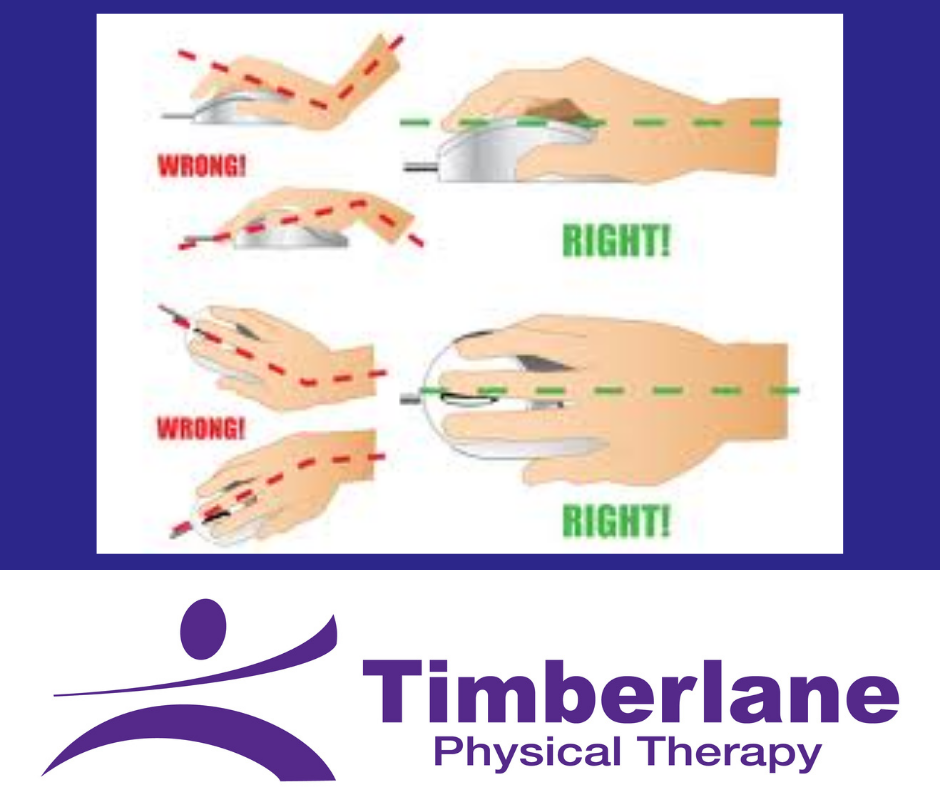Overview
Carpal tunnel syndrome is a common condition that causes pain, numbness, tingling, and/or weakness in the hand and arm. It is the most common entrapment neuropathy affecting approximately 3-6% of the adult population. It is the compression or inflammation of the median nerve as it passes through the carpal tunnel, a narrow passageway on the palm side of your wrist.
In some cases, carpal tunnel syndrome can get worse over time and develop into significant impairments of strength and ability to perform activities of daily living such as typing, writing, buttoning clothes, holding objects, and other fine motor abilities.
Cause
Most cases of carpal tunnel syndrome are caused by a combination of several factors. It can be caused by trauma, repetitive stress and motions, inflammation, poor posture, and certain diseases. Other risk factors for carpal tunnel syndrome include:
- The carpal tunnel may be smaller in some people or there may be anatomic differences that change the amount of space for the nerve. It is more common in females possibly due to the carpal tunnel area being smaller.
- Repetitive hand use. Repeating the same hand and wrist motions or activities over a prolonged period of time may aggravate the tendons in the wrist, causing swelling that puts pressure on the nerve.
- Hand and wrist position. Doing activities that involve extreme flexion or extension of the hand and wrist for a prolonged period of time can increase pressure and irritation on the nerve. This includes sleeping positions involving flexion or curling the wrists down.
- Hormonal changes during pregnancy can cause swelling that may compress the median nerve.
- Health conditions. Diabetes, congestive heart failure, rheumatoid arthritis, kidney disease, obesity, and thyroid gland imbalance are conditions that are associated with a higher risk for developing carpal tunnel syndrome.
Symptoms
Symptoms of carpal tunnel syndrome may include:
- Numbness, tingling, burning, and pain—most often in the thumb, index, and middle fingers
- Pain or tingling that radiates up the arm toward the shoulder
- Weakness in the hand—this may make it difficult to perform fine movements such as buttoning your clothes or writing
- Dropping things—due to weakness, numbness, or a loss of proprioception (awareness of where your hand is in space)
In most cases, the symptoms of carpal tunnel syndrome begin slowly and gradually. Many patients find that their symptoms come and go at first and are just a nuisance. If the symptoms are allowed to worsen, symptoms may occur more frequently, be more intense, or last for longer periods of time.
Night-time symptoms are very common. Because many people sleep with their wrists bent (or flexed), symptoms may awaken you from sleep. This position can compress the median nerve inducing painful symptoms. During the day, symptoms often occur when holding something for a prolonged period of time with the wrist bent too far down or too far back, such as when using a phone, driving, typing, or holding a book or instrument.
Prevention
So what can you do to prevent developing carpal tunnel syndrome?
Try these ergonomic tips for the wrist and hand to help decrease your risk of developing carpal tunnel syndrome:
- Maintain your wrist in a neutral alignment with your hand. Avoid frequent extreme motions of wrist up (extension) or wrist down (flexion). You may consider an ergonomically designed mouse or keyboard to help with this when using a computer. You may also need to consider using a wrist splint when sleeping to help keep your wrist in a neutral position.
- Modify tools so that the handle is larger and you are able to hold tools in a neutral wrist position. Larger grip tools, gardening tools, and kitchen utensils exist to help reduce pain and stress on the wrist and hand. This will reduce the amount of over gripping that can cause compression and inflammation around the median nerve.
- Minimize excessive gripping during tasks (holding a hammer, gripping the steering wheel, carrying objects). Keep a more relaxed grip for less stress on the wrist/hand.
- Restrict forceful pinching activities (needlework, writing, etc.) which may irritate the area. If you are unable to stop the aggravating task, complete the task in short periods and take frequent rest breaks with the hand relaxed. Try to vary the types of activity you perform throughout the day to give your hand a break.
- Decrease or avoid tasks that involve repetitive vibration (over gripping a steering wheel, using lawn mower, drilling, etc.). Anti-vibration gloves are available to decrease the effects of vibration on irritated nerves.
- Keep hands warm in cold weather so that decreased sensation does not cause you to have a tighter more irritating grip. You are more likely to develop hand pain and stiffness when you work in a cold environment. Fingerless gloves can be helpful to keep your wrists and hands warmer but still allow you to work.
- Improve your posture. Incorrect posture puts your shoulders in a more forward and rounded position, which can shorten your neck and shoulder muscles and compress the nerves in your neck. This can lead to developing symptoms in wrists, fingers and hands.
- Avoid participation in long lasting and/or rapid repetitive tasks which may lead to muscle fatigue. Fatigued muscles are more prone to injury and overuse.
Talk to your physical therapist if you have persistent signs and symptoms suggestive of carpal tunnel syndrome that interfere with your normal activities, work, and sleep. Permanent nerve and muscle damage can occur without treatment.







Leave A Comment